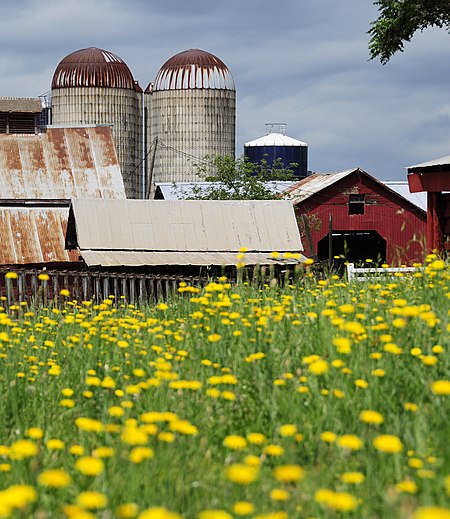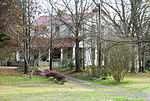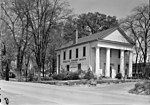Denver Downs Farmstead

Denver Downs Farmstead, also known as Garrison Farm, is an historic farm on the outskirts of Anderson, South Carolina.Denver Downs is historically and architecturally significant as an extant working farm dating to 1872. The farmstead consists of 464 acres, but only 20 acres are considered to be part of this Historic Register nomination. In 1974, the farmstead was recognized as a “Century Farm,” having been owned and operated by the same family for 100 years. Denver Downs Farmstead was listed in the National Register March 7, 2007.The main house is a large Colonial Revival farmhouse that features white clapboard siding, a metal roof, and a wraparound porch. The farmstead is bordered on one side by the Clemson Highway, but it is possible to view the farm from one of the public roads that cut through the property.
Excerpt from the Wikipedia article Denver Downs Farmstead (License: CC BY-SA 3.0, Authors, Images).Denver Downs Farmstead
Denver Road,
Geographical coordinates (GPS) Address Nearby Places Show on map
Geographical coordinates (GPS)
| Latitude | Longitude |
|---|---|
| N 34.58 ° | E -82.724444444444 ° |
Address
Denver Road 1518
29625
South Carolina, United States
Open on Google Maps




